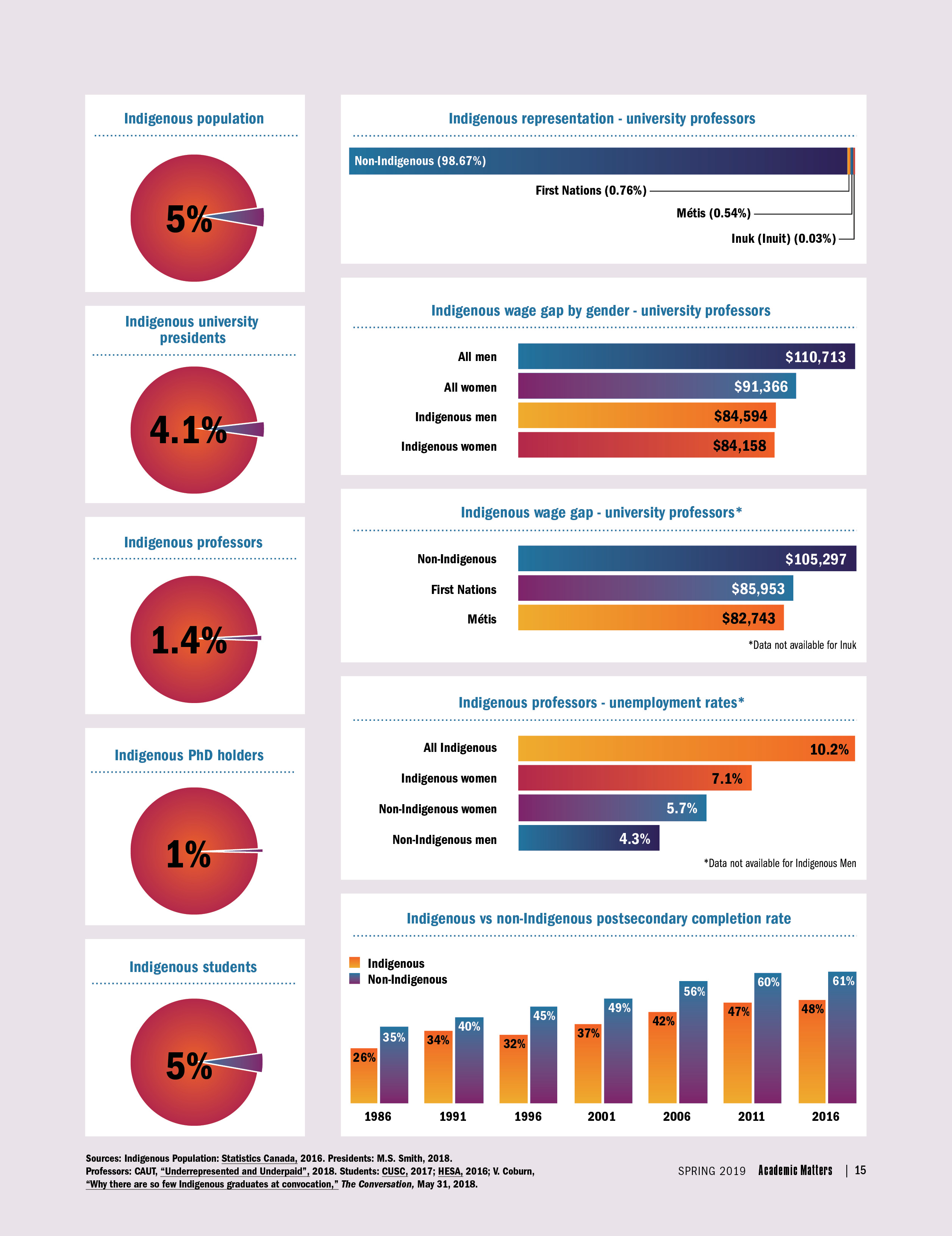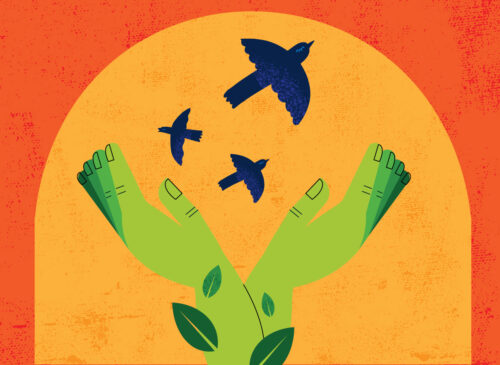Where are the Indigenous Peoples in Canadian universities?
Canadian postsecondary institutions have pursued equity, diversity, and inclusion policies and programs since the late-1980s. Since then, progress toward a more equitable academy has not advanced as many had hoped.
One issue repeatedly raised is the lack of good data, particularly data that is disaggregated and intersectional for members of racialized groups and for Indigenous peoples (First Nations, Métis, and Inuit). Recent research, notably the co-authored book by Frances Henry, Ena Dua, Carl James, Audrey Kobayashi, Peter Li, Howard Ramos, and Malinda S. Smith, The Equity Myth: Racialization and Indigeneity at Canadian Universities and the Canadian Association of University Teachers’ Underrepresented and Underpaid: Diversity & Equity Among Canada’s Post-Secondary Education Teachers have identified the equity data gap in representation, experiences, and pay for racialized and Indigenous scholars in Canadian universities.
Since 2016, The Diversity Gap series created by Dr. Malinda S. Smith, a professor in the Department of Political Science at the University of Alberta, has presented disaggregated and intersectional data on women, racialized minorities, and Indigenous peoples in the Canadian academy. The research data have been disseminated in an infographic designed in collaboration with Dr. Nancy Bray, a lecturer in Communications Fundamentals for Professional and Writing Studies at the University of Alberta.The Diversity Gap series are published by the Academic Women’s Association.
The Indigenous diversity gap infographic presented here provides answers to the question: “Where are the Indigenous Peoples at Canadian universities?” and presents for the first time an outline of an “academic pipeline” for Indigenous peoples in Canadian universities.

The infographic represents, where possible, disaggregated and intersectional data on First Nations, Métis, and Inuit in Canadian universities. According to the 2016 Canadian Census, Indigenous peoples constitute 5 per cent of the population. Although there are more Indigenous students in the postsecondary sector, the gap in completion rates for Indigenous and non-Indigenous undergraduate students persists and has remained around 14 per cent since the 1990s. Indigenous students constitute 1 per cent of PhD students on Canadian campuses. The gap in college and university teachers is closing with new target hires. Still, in 2018, Indigenous peoples constituted only 3 per cent of college instructors, 1.4 per cent of university professors, and 5 per cent of university presidents. There is a significant —15 to 20 per cent—wage gap between Indigenous and non-Indigenous professors.










